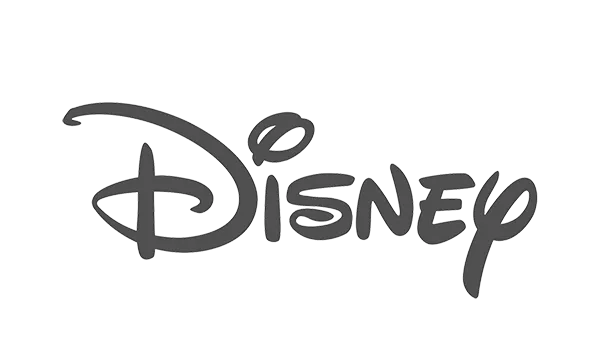Traditional performance management processes were based on the belief that organizations operate in stable environments. Today, the landscape is anything but stable. As organizations look to adapt to the rapidly evolving talent and business landscape, performance management is at the top of the executive agenda.
Enter continuous performance management.
What Is Continuous Performance Management?
Continuous performance management is defined as an ongoing process that enables managers and employees to exchange feedback regularly to achieve near-term business objectives. It is in contrast to traditional performance management, which is often a once-in-a-year activity linked to annual appraisals.
Continuous performance management is based on the principles of agile management and real-time feedback that takes place throughout the year.
Why Is Continuous Performance Management Important?

Continuous feedback loops help managers and employees develop a natural relationship centered around insights, recommendations, and concerns on the business impact of individual and team performance.
As businesses respond to larger macroeconomic trends, performance management needs to keep up with the changing scope of work. With project timelines shrinking, performance management goals can no longer be mapped out a year in advance with much accuracy.
Let’s look at some of the most valuable companies today – Alphabet, Netflix, Amazon, Apple, Tesla, Microsoft, and IBM – and what sets them apart. It’s serial innovation. It’s their ability to adapt rapidly to the shifting patterns of supply, demand, consumer behavior, and ways of doing business. These companies have taken multiple moonshots. They’ve consistently delivered on innovation.
However, a culture of innovation is rarely born in a vacuum. It exists by design. You need a clear management performance strategy to support it with appropriate investment in processes and technologies. And that’s where continuous performance management promises to deliver.
Organizations today need employees who are empowered, connected, and take ownership of their work. Continuous performance processes facilitate this by establishing open channels of communication, encouraging transparent dialog, and giving employees autonomy and independence.
The best thing? This is not a one-time offer. It is an ongoing conversation between managers and employees, which occurs across multiple channels – face-to-face check-ins, instant messaging, email, team collaboration apps, and more.
Continuous feedback loops lead to constant innovation, as employees are better positioned to understand how their individual goals contribute to broader business objectives.
According to recent performance management statistics, managers account for 70% of variance in employee performance. Continuous performance processes make it easier for managers to build a culture of engagement and high performance.
How to Implement Continuous Performance Management

While traditional performance management focuses on fixed goals that are likely to become outdated by the time the annual performance appraisal comes around, agile performance management is based on near-term goal-setting directly connected to business outcomes.
The underlying argument is that a sense of purpose, clarity, and progression is what unleashes high performance. There has never been a better time to implement this process for your organization. Here’s how you can get started:
Step #1: Secure Executive Buy-in
Like all things culture, performance measurement also flows top-down. This means, your leadership team must commit to embracing continuous performance management. Start with a business case for initiating the transformation and clearly outline the benefits and the impact it will have on the business.
Pro tip: Demonstrate how a continuous performance process can save the company hundreds of thousands of dollars by identifying performance issues in real time. Here’s some inspiration – how Netflix transformed its performance process by ditching the annual review.
Step #2. Invest in Manager Training
Your management team will function at a high level if you invest in coaching and development for them. Transforming your performance process requires behavioral change. Particularly in the way, managers and employees communicate. Managerial communication skills might come naturally to some, however, for the rest – it is important to know how to give empathetic performance reviews and identify barriers to effective communication.
With employees still working remotely, face-to-face meetings have gone virtual, meaning, real-time feedback can be challenging. When communicating digitally, over-communication is always better – it makes up for peripheral communication that occurs in an office.
Step #3. Embrace a Dynamic Goal Setting
The purpose of goal-setting is to foster a culture of high performance. However, the most important part of this puzzle is the employee. Success with goal-setting becomes much easier once employees are onboard.
Jointly developing SMART (specific, measurable, actionable, results-oriented, and time-bound) goals will inspire commitment and give employees a sense of ownership in achieving them.
Also, agile processes ensure that the goals are dynamic and evolving. As the organization adapts to the changing business environment, regularly revisiting goals is absolutely critical to realizing the promise of continuous performance management.
Step #4. Measure, Analyze, and Optimize
In his book, Measure What Matters, John Doerr notes that high-performing companies such as Google, Amazon, Slack, and Inuit achieved remarkable results by implementing objectives and key results (OKRs) to gauge employee performance. In his Ted Talk, he emphasizes why it’s one of the best performance management practices for organizations to set the right objectives.
Continuous performance processes enable you to continually iterate and optimize goals related to desired business outcomes. The concept lends itself well to small experiments, accurate measurement, and data-driven planning, which ultimately makes it easier to arrive at the right objectives.
Choosing the Right Performance Management Solution

Succeeding with continuous performance management involves aligning your people, processes, and technology to agile practices. Assuming you have secured executive buy-in, upskilled your managers, and defined the process, choosing the right tech is the final step in your transformation journey.
Here’s a brief list of questions to ask when evaluating different performance management systems and OKR software:
Does it play well with your existing HR tech stack?
Can you export the performance management data from the potential solution to other systems within your organization to map KPIs more effectively?
Pro tip: Manual integration requirements are a red flag. Look for solutions that easily integrate with your existing technology stack – your HCM system, people analytics platforms, and team collaboration tools.
Is it easy to use?
Ease of use is perhaps the biggest barrier to technology adoption. Keep your end-users in mind. If you need a data scientist to tell you what your team performance looks like, then it is best to find an alternative performance management software.
How much does it cost?
Cost rationalization is becoming increasingly important as organizations look to optimize their existing technology investments. While performance management is an essential part of business recovery, calculating the ROI of performance software can be slightly tricky.
Common KPIs such as retention rate, productivity, and time savings are all helpful when accessing potential solutions. Speak to vendors about additional KPIs that their software allows you to track and if they align with your business objectives.
Pro tip: Check out how cross-functional buying committees can help you decide faster.
Conclusion
Performance management success is dependent on the trifecta of people, processes, and technology. As we move towards more flexible working models, HR leaders will need to rethink their approach to team management and accountability.
While the fundamental tenets of continuous performance management hold for most organizations, different business pressures demand different treatments.
For instance, offering financial rewards and non-monetary incentives to individual sales performers is still a great way to emphasize accountability and develop a high-performance culture.
Similarly, not-for-profit organizations might still find annual reviews useful. If you’re still unsure if the agile performance process makes sense for your organization, you might want to consult with experts who’ve successfully implemented such transitions at scale.
“The greatest danger in times of turbulence is not the turbulence – it is to act with yesterday’s logic.” – Peter Drucker
All the best on your performance transformation journey!












.png)
.png)













